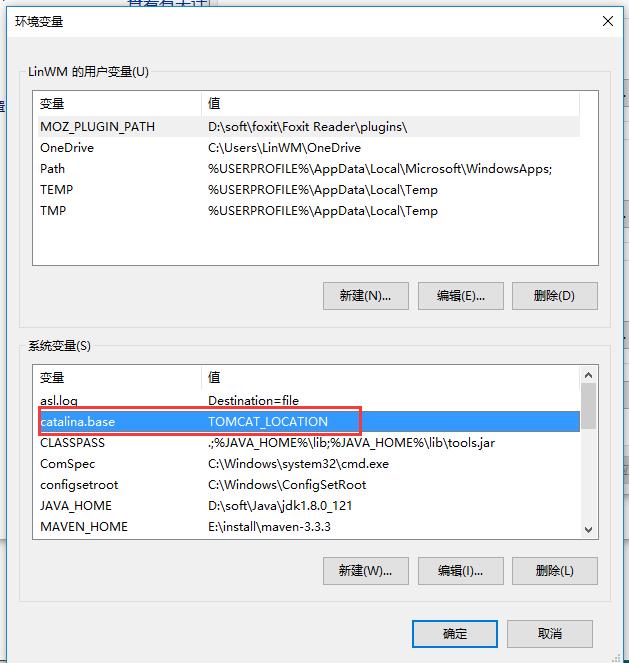Redis+Tomcat+Nginx集群实现Session共享,Tomcat Session共享
Posted 蕃薯耀
tags:
篇首语:本文由小常识网(cha138.com)小编为大家整理,主要介绍了Redis+Tomcat+Nginx集群实现Session共享,Tomcat Session共享相关的知识,希望对你有一定的参考价值。
Redis+Tomcat+Nginx集群实现Session共享,Tomcat Session共享
=============================
蕃薯耀 2017年11月27日
http://www.cnblogs.com/fanshuyao/
代码美化版或附件下载见:http://fanshuyao.iteye.com/blog/2400975
一、Session共享使用tomcat-cluster-redis-session-manager插件实现
插件地址见:https://github.com/ran-jit/tomcat-cluster-redis-session-manager
该插件支持Tomcat7、Tomcat8、Tomcat9
或者直接在附件中下载(版本为2.0.2,2017-11-27日前最新版本)
这里有是一个只支持Tomcat7的,不支持tomcat8,暂时不见新的维护:
https://github.com/jcoleman/tomcat-redis-session-manager
二、tomcat-cluster-redis-session-manager详解
1、解压后的文件如下:

conf目录下有一个redis-data-cache.properties :Redis的配置文件
- #-- Redis data-cache configuration
- #- redis hosts ex: 127.0.0.1:6379, 127.0.0.2:6379, 127.0.0.2:6380, ....
- redis.hosts=127.0.0.1:6379
- #- redis password (for stand-alone mode)
- #redis.password=
- #- set true to enable redis cluster mode
- redis.cluster.enabled=false
- #- redis database (default 0)
- #redis.database=0
- #- redis connection timeout (default 2000)
- #redis.timeout=2000
lib目录下有4个jar包,如下:
commons-logging-1.2.jar
commons-pool2-2.4.2.jar
jedis-2.9.0.jar
tomcat-cluster-redis-session-manager-2.0.1.jar
三、使用方法:
压缩文件中有使用方法,见readMe.txt 文件:
第一步:
- 1. Move the downloaded jars to tomcat/lib directory
- * tomcat/lib/
就是把lib目录下的Jar包全复制到tomcat/lib目录下
(一般来说tomcat是集群,至少有2个tomcat,所以先配置好一个tomcat,复制完文件后,再将tomcat文件重新复制一份,这样省事,但需要修改tomcat相应的端口)
第二步:
- 2. Add tomcat system property "catalina.base"
- * catalina.base="TOMCAT_LOCATION"
就是配置一个环境变量,和Jdk配置的环境变量一样,需要配置一个catalina.base的环境变量,值为TOMCAT_LOCATION
如下:


第三步:
- 3. Extract downloaded package (tomcat-cluster-redis-session-manager.zip) to configure Redis credentials in redis-data-cache.properties file and move the file to tomcat/conf directory
- * tomcat/conf/redis-data-cache.properties
把conf目录下的配置文件redis-data-cache.properties复制到tomcat/conf/目录下
第四步:
- 4. Add the below two lines in tomcat/conf/context.xml
- <Valve className="tomcat.request.session.redis.SessionHandlerValve" />
- <Manager className="tomcat.request.session.redis.SessionManager" />
在tomcat/conf/目录下的context.xml文件,加上相应的配置,如下:
- <?xml version="1.0" encoding="UTF-8"?>
- <!--
- Licensed to the Apache Software Foundation (ASF) under one or more
- contributor license agreements. See the NOTICE file distributed with
- this work for additional information regarding copyright ownership.
- The ASF licenses this file to You under the Apache License, Version 2.0
- (the "License"); you may not use this file except in compliance with
- the License. You may obtain a copy of the License at
- http://www.apache.org/licenses/LICENSE-2.0
- Unless required by applicable law or agreed to in writing, software
- distributed under the License is distributed on an "AS IS" BASIS,
- WITHOUT WARRANTIES OR CONDITIONS OF ANY KIND, either express or implied.
- See the License for the specific language governing permissions and
- limitations under the License.
- --><!-- The contents of this file will be loaded for each web application --><Context>
- <!-- Default set of monitored resources. If one of these changes, the -->
- <!-- web application will be reloaded. -->
- <WatchedResource>WEB-INF/web.xml</WatchedResource>
- <WatchedResource>${catalina.base}/conf/web.xml</WatchedResource>
- <!-- Uncomment this to disable session persistence across Tomcat restarts -->
- <!--
- <Manager pathname="" />
- -->
- <!-- Uncomment this to enable Comet connection tacking (provides events
- on session expiration as well as webapp lifecycle) -->
- <!--
- <Valve className="org.apache.catalina.valves.CometConnectionManagerValve" />
- -->
- <Valve className="tomcat.request.session.redis.SessionHandlerValve"/>
- <Manager className="tomcat.request.session.redis.SessionManager"/>
- </Context>
第五步:
- 5. Verify the session expiration time (minutes) in tomcat/conf/web.xml
- <session-config>
- <session-timeout>60<session-timeout>
- <session-config>
修改session的过期时间,默认是30分钟,可以不需要此步骤。
session集群的配置至此结束。
四、Nginx集群
1、下载Nignx:http://nginx.org/en/download.html
本人练习时使用windows,所以下载的windows版本:http://nginx.org/download/nginx-1.13.7.zip
2、下载后解压:D:\\soft\\nginx-1.12.2 (之前使用的是1.12.2的版本,现在最新版是1.13.7,但都一样,附件中有1.12.2版本提供下载)

3、修改Nginx配置文件nginx.conf
进入conf目录(D:\\soft\\nginx-1.12.2\\conf),找到nginx.conf配置文件,打开编辑:
3.1在http{……}里加上upstream,如下:
- upstream myTomcatCluster{# tomcatCluster和proxy_pass保持一样
- #解决session的问题
- #ip_hash;#加上这个,解决Session每次访问页面都不一样,加上就一样了。
- #这里是tomcat的地址,weight越大,访问机率越大。
- server 127.0.0.1:9300 weight=1 fail_timeout=5s max_fails=1;
- server 127.0.0.1:9400 weight=1 fail_timeout=5s max_fails=1;
- }
server:配置tomcat服务器请求的地址,2台Tomcat服务就配置2个server,分别对应9300,9400端口
weight 表示权重,权重越大,访问到的机率越大。
3.2、修改location / {……}
默认是这个的:
- location / {
- root html;
- index index.html index.htm;
- }
修改成这样:
- location / {
- #root html;
- proxy_pass http://myTomcatCluster;
- #index index.html index.htm;
- proxy_set_header Host $host;
- proxy_set_header X-Real-IP $remote_addr;
- proxy_set_header X-Forwarded-For $proxy_add_x_forwarded_for;
- proxy_connect_timeout 1;
- proxy_read_timeout 1;
- proxy_send_timeout 1;
- }
最简单的配置就是:
- location / {
- proxy_pass http://myTomcatCluster;
- }
myTomcatCluster 对应upstream后的命名。
下面的配置可以解决2个Tomcat服务器集群,当一台服务器挂掉(宕机)后,请求变得很慢的问题。
(Tomcat集群一台服务器挂掉后请求变慢解决方案)
- proxy_connect_timeout 1;
- proxy_read_timeout 1;
- proxy_send_timeout 1;
3.3、启动Nginx服务器
使用Windows命令行启动
(1)进入D盘:d:
(2)进入D:\\soft\\nginx-1.12.2目录:
- cd D:\\soft\\nginx-1.12.2
(3)启动服务: (启动一闪而过,但打开进程管理器能看到是已经启动的)
- start nginx
关闭服务的命令:nginx -s stop
重新加载的命令:nginx -s reload,修改配置文件后,可以使用该命令直接加载,不需要重启。
五、测试集群:
1、tomcat准备
将已经配置好的一个tomcat复制一份,修改端口,然后再修改一下tomcat的配置文件(server.xml)
我的一个tomcat在:D:\\soft\\apache-tomcat-8.0.45-9300\\conf
另一个是:D:\\soft\\apache-tomcat-8.0.45-9400\\conf
修改:
- <Engine defaultHost="localhost" name="Catalina">
其中tomcat 9300端口的修改如下:
- <Engine defaultHost="localhost" jvmRoute="jvm9300" name="Catalina">
tomcat 9400端口的修改如下:
- <Engine defaultHost="localhost" jvmRoute="jvm9400" name="Catalina">
2、项目准备:
新建立一个web项目,然后新建立一个index.jsp的文件,如下:
- <%@ page language="java" contentType="text/html; charset=UTF-8"
- pageEncoding="UTF-8"%>
- <!DOCTYPE html PUBLIC "-//W3C//DTD HTML 4.01 Transitional//EN" "http://www.w3.org/TR/html4/loose.dtd">
- <html>
- <head>
- <meta http-equiv="Content-Type" content="text/html; charset=UTF-8">
- <title>首页redis-session</title>
- </head>
- <body>
- <div>tomcat 集群测试</div>
- <div>
- <%
- //HttpSession session = request.getSession(true);
- System.out.println(session.getId());
- out.println("<br> SESSION ID:" + session.getId()+"<br>");
- %>
- </div>
- </body>
- </html>
主要是在打印页面输出sessionId的信息:
- out.println("<br> SESSION ID:" + session.getId()+"<br>");
然后把这个项目分别部署到9300、9400端口的2个tomcat中,分别启动,记得也启动Nginx和redis哦
然后打开浏览器通过地址访问项目:http://localhost/redis-session/ (使用Nginx集群分发,不需要端口号访问),显示如下:
- tomcat 集群测试
- SESSION ID:B837ECA85B47081EAA2FEFCD7E579CD2.jvm9400
无论怎么刷新访问(打开新的标签页也是(非新窗口))的都是jvm9400,也就是端口号为9400的tomcat
后缀.jvm9400就是前面配置的:
- <Engine defaultHost="localhost" jvmRoute="jvm9400" name="Catalina">
打开新的隐身窗口访问:
- tomcat 集群测试
- SESSION ID:83BBA58F4EB7B2EFF90AE05D4A0629FD.jvm9300
这时访问的是端口号为9300的tomcat,通过后缀.jvm9300判断知道。
新窗口每次访问的是都是tomcat9300,session也不会变。
在访问后缀为.jvm9400时,把端口9400的tomcat关掉,再次刷新访问,sessionId一样不变,由此可见,2个tomcat的sessionId是共享的。
使用Redis实现session共享的好处就是,把session管理放在redis中,如果服务器重启或挂机,sessionId保存在redis中,下次重启后一样生效,避免sessionId失效,同样redis最好也做集群,避免redis重启或挂机。
(如果你觉得文章对你有帮助,欢迎捐赠,^_^,谢谢!)

=============================
蕃薯耀 2017年11月27日
http://www.cnblogs.com/fanshuyao/
以上是关于Redis+Tomcat+Nginx集群实现Session共享,Tomcat Session共享的主要内容,如果未能解决你的问题,请参考以下文章
